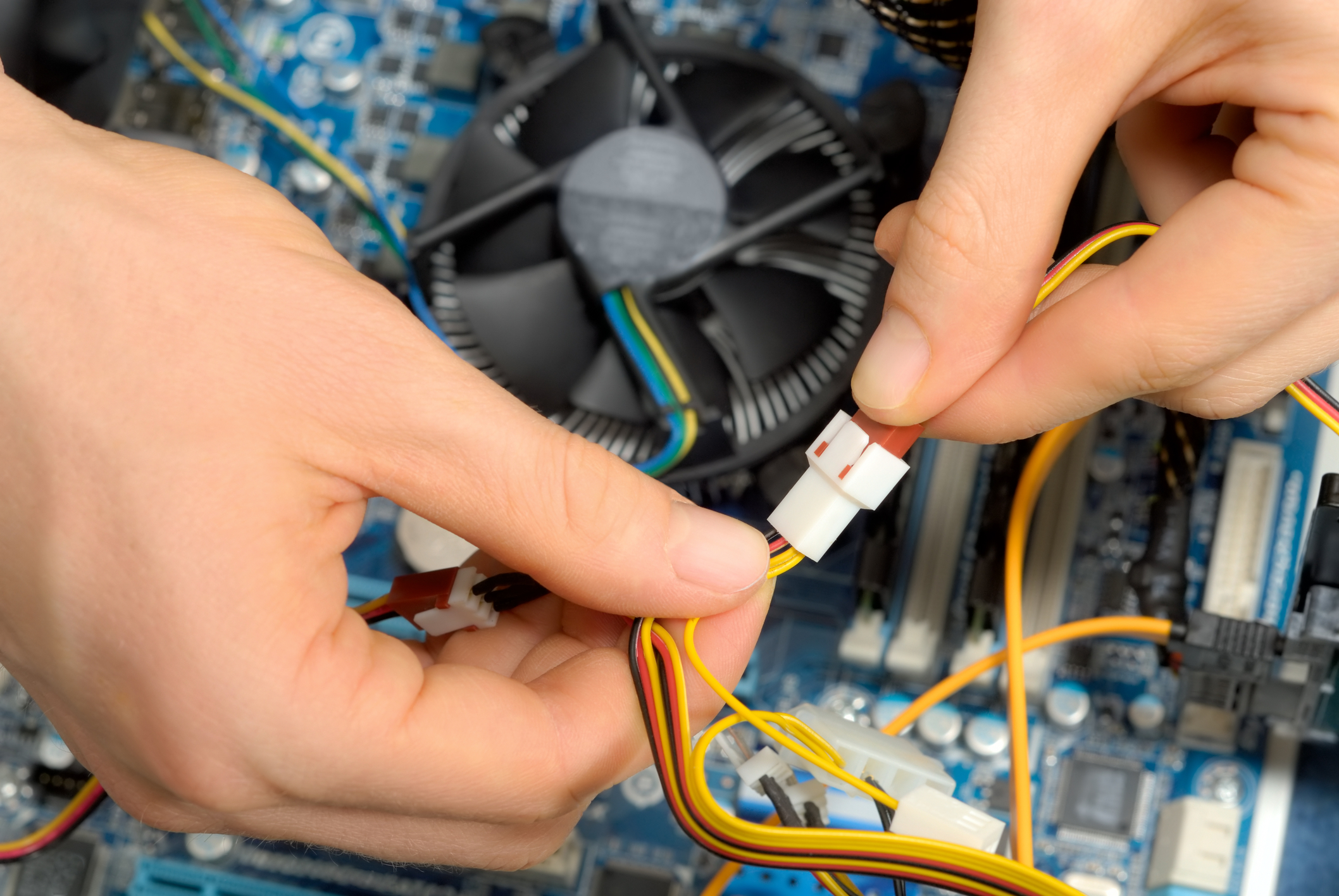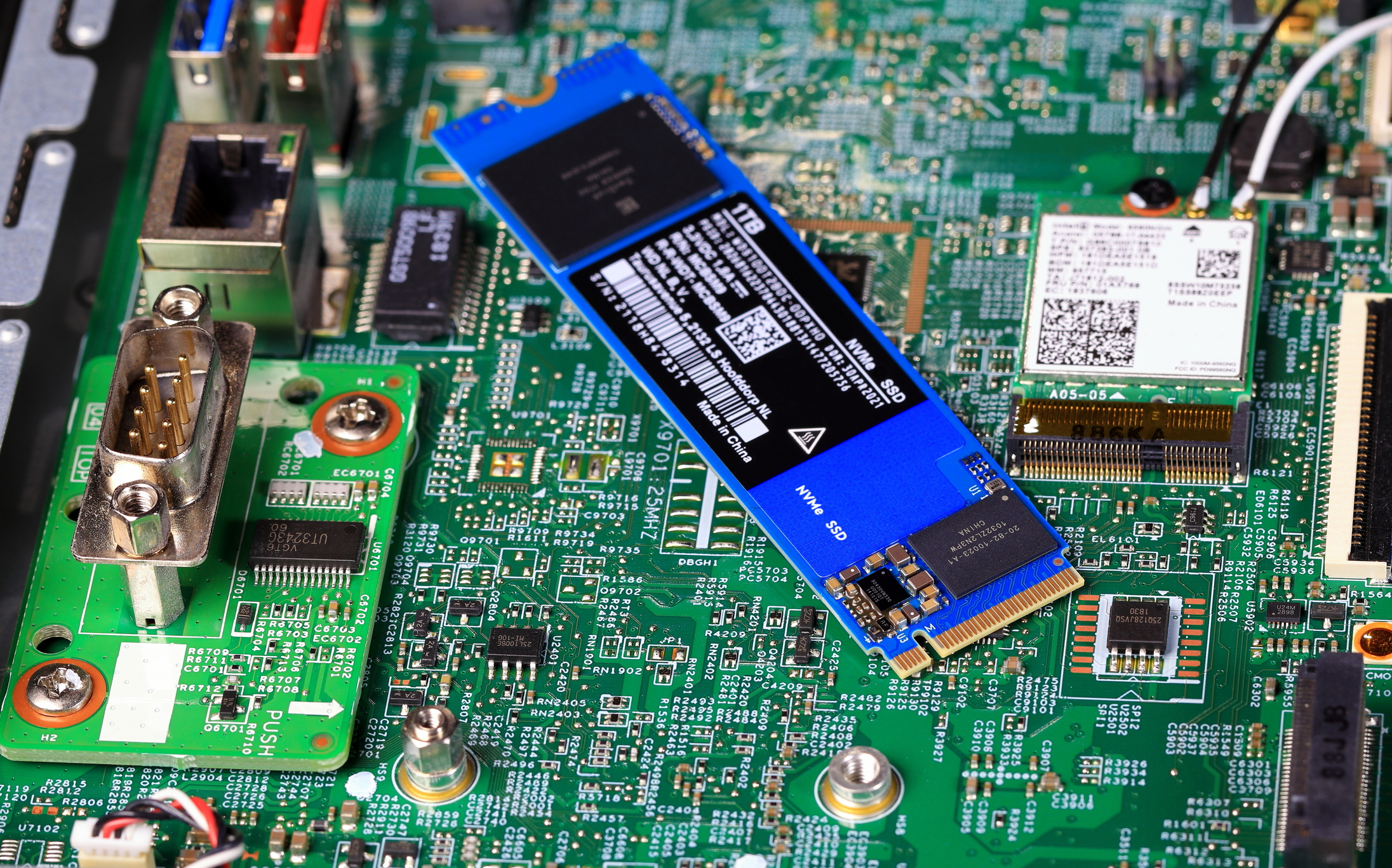When you’ve been working with PCs for a long time, you develop a certain confidence in handling them. But that confidence can quickly be shaken when something suddenly stops working. In my case, I noticed slight stuttering in games whenever I launched a browser or browsed through my photo galleries. What to do? Naturally, I reacted in the most professional way possible–by spending the evening in a foul mood on the couch. I then brought over 30 years of PC experience to bear, ran countless analyses, quite certain I’d find the error quickly. Things turned out differently.

With a small racing game called Retrowave, there was no denying it anymore: My PC wasn’t running smoothly. Sound playback was delayed, animations stuttered, and keystrokes were only registered after I had already crashed into another car. A quick look at system performance metrics revealed: My computer was practically dying of boredom during the game. CPU, memory, and disk usage were minimal. Nothing significant was running in the background–just as it should be. Testing without antivirus software and with most security options disabled made no difference either, nothing was being blocked, throttled, or painfully slowly scanned.
A look at Device Manager presented an equally calm picture: no conflicts, no unknown driverless devices. I then moved on to the hardware: Temperatures, memory test, quick benchmarks of the graphics card, disks, CPU–everything in the green. Odd. Before looking into the drivers, I ran a quick Windows 11 update check. Could my PC be just one of many exhibiting this odd behavior? Wading through endless forum posts, I quickly realized one thing: Windows 11 drives some people genuinely mad. There were plenty of issues, including performance problems, but they were all different. Sometimes entire components failed, machines wouldn’t boot, or systems ran sluggish all the time. Nothing matched my case.
Next, I took a closer look at the drivers. Was everything up to date, and were the correct ones installed? Had Windows perhaps slipped something in where the hardware makers offered their own, supposedly better software? A few less important components indeed got updated, the BIOS received a couple of “minor improvements,” and then I rebooted–with little hope. And lo and behold: Nothing! My pulse rising, I watched the all-too-familiar stutters and reached for my last arrow in the quiver: Maybe it was the power supply! So down to the basement I went, grabbed a new one from the spare parts corner, and rewired everything. Proud of my modern artwork full of zip ties, I powered up the system–and found it still stuttering. By now, my neighbors must have thought I was practicing some kind of modern primal scream therapy.

My last hope was the collective intelligence of my colleagues–after all, I work at a software company full of experts! What I got were valuable tips, links to further diagnostic tools, and plenty of empathy. Like farmers worrying over a sick calf, people put their heads together, discussed, and searched for that one decisive flash of insight. The next morning brought certainy: It was all for nothing. I had to walk the path of shame, the path of failure. I had to take my PC to a repair shop. Would the computer scientists of earlier generations now look down on me with disdain? Could I ever show my face at work again? Would my employment contract now be at risk? Humble as King Henry IV on his walk to Canossa, I lugged my PC to the shop.
The spotless office, which was nothing like the greasy repair shops of old, seemed to employ staff trained in psychology. Gently, they asked about the problems, what I had already analyzed and tried, and immediately recognized who they were dealing with: A (professionally, at least) broken man. After fifteen minutes of conversation, I left, convinced my machine was in good hands. I was told it would take one to two days before they’d get back to me. After three days, I called and was met with mixed feelings. They had tested and swapped a lot already, but still weren’t any wiser. Inside me, a battle waged between disappointment (I wanted my PC back) and satisfaction (clearly the issue wasn’t that simple)! The next day came the long-awaited call: I should come in.

With visible pride, they presented the solution. In a detailed disk benchmark, they had found an irregularity in accessing very small files (random reads of 4 KB). My NVMe SSD (basically just a plug-in card directly on the motherboard) had been well-tested when I bought it, but was now known to often develop problems after prolonged use. My operating system had already been cloned and moved to a new brand-name drive, and everything was supposed to be running smoothly again. To prove it, they showed me benchmark results before and after the replacement. Accessing small files had improved by a factor of 12. Disregarding the price of the drive, the bill was fair, so I grabbed the PC and headed home. There, I hooked everything back up but didn’t dare try the game right away. Instead, I checked whether my old SSD really was prone to errors. The result: If you knew exactly what to look for, there were indeed reports confirming this. Only then did I launch the racing game and, with the greatest satisfaction and not a single stutter, I played for a full hour. Everything was right as rain again.




Really? Is that a Germany thing?
Having been in the computer industry since 1977, and owning a computer business since 1982, I've never personally had an issue with naming or calling out manufacturer's products nor have I seen any other company, blogger, or forum poster with issue.
I've seen many "named" instances of critiques of products good or bad from many companies (a couple examples: PC Magazine, PC World, Tom's Hardware, etc.) so I don't see where the fear of reprecussions comes from at least in the U.S. anyway.
Does Germany have such strict laws where this could actually come into place? I'm not being sarcastic, I'm truly interested if such is the case.
Also, I've been reading your blog for years now Sven. Even as experienced in the computer industry as I am personally, I find your blogs fresh, and interesting. Thanks and keep up the good work!
Thank you very much for the praise. :) It's much simpler than that: I had just come from a meeting with an affiliate company when I wrote the blog. Among other things, the meeting was about comparative advertising, and several legal disputes had just been resolved. And since this blog is my little, cozy, private project, I simply didn't feel like getting involved in anything like that.
Great as usual, Sven. A part of me wishes to know the manufacturer of the NVMe drive, but I figured you didn't want to specify the Co., for fear of receiving a nastygram from lawyers.
Thanks! Yes, those are always the constraints you feel as a blog writer. In addition, it was a specific series that is no longer sold. So I left it at that and hope that I am one of the few with this hard drive problem.